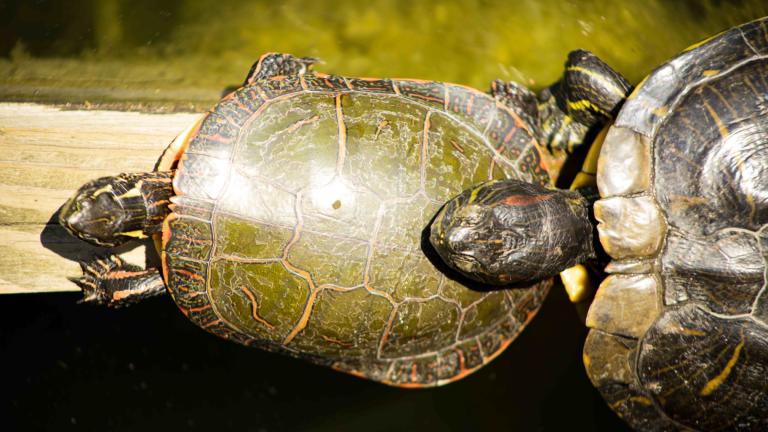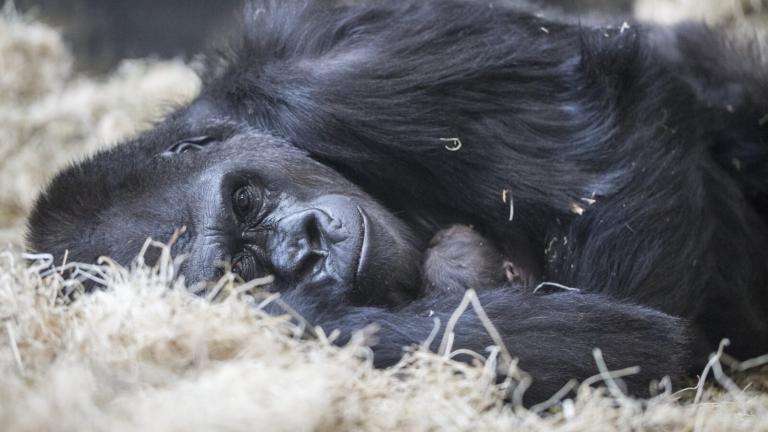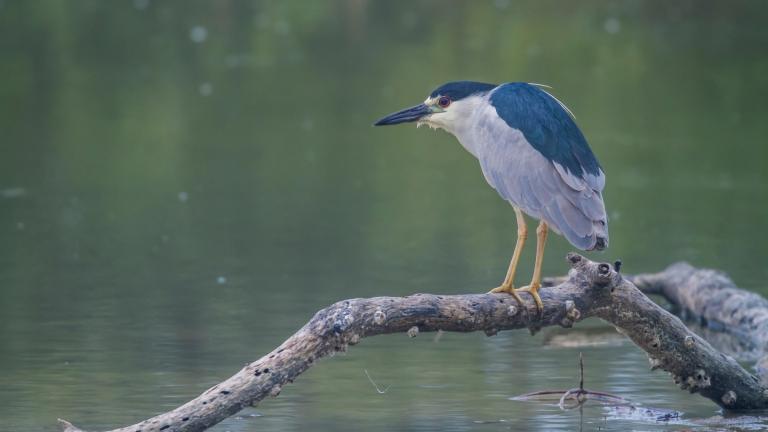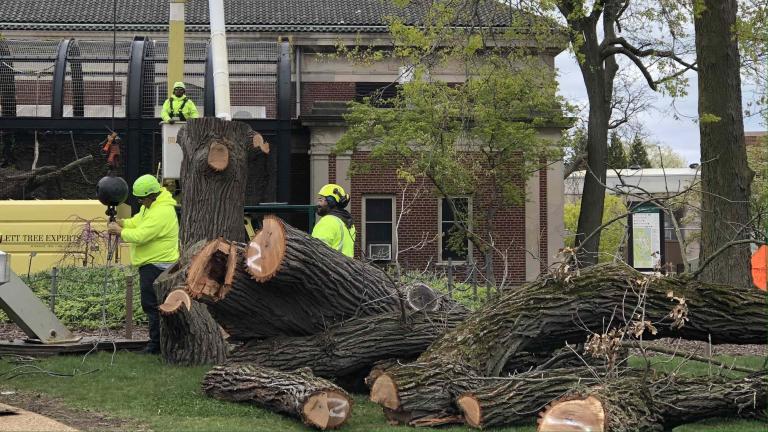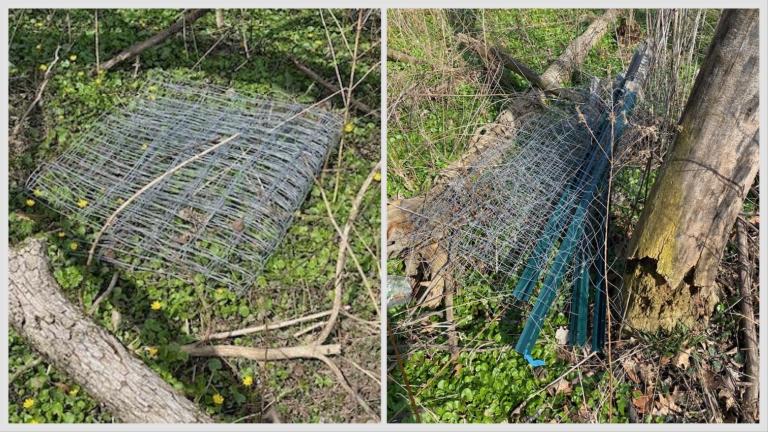(Video produced by Nicole Cardos)
Lincoln Park Zoo is a haven for a number of endangered species, from western lowland gorillas to Grevy’s zebras to eastern black rhinos.
They’re fed specific diets on a regular schedule, are housed in habitats created for their comfort and stimulation, and have their breeding carefully coordinated by international agreement.
And then there’s the zoo’s colony of endangered black-crowned night herons.
The birds find their own mates and come and go at will, winging across the city to forage for their own food, be it fish plucked from the Chicago River or french fries scavenged at Navy Pier.
Why such dramatically different treatment?
Well, because the birds — listed as endangered in Illinois since 1977 — chose the zoo, not the other way around.
The free-range herons aren’t captive, they’re wild. They just happen to feel more comfortable building their nests within the zoo’s walled grounds than anywhere else in Illinois. Indeed, were a catastrophe to strike this colony, the largest known in Illinois, the bird would be considered locally extinct in the state.
This “all eggs in one basket” approach is concerning enough to ecologists that a group is working to lure the herons to other natural areas in the Chicago region in the hopes of redistributing the colony’s population. Decoy nests have been set up in places like Big Marsh Park on the Southeast Side, where the sorts of wetlands the herons should prefer have been restored.
So far the birds aren’t taking the bait.
This spring, hundreds of the night herons — close to 700 at peak count — once again flocked to the zoo for breeding season, possibly, the theory goes, because it has something other parks and preserves don’t.
Bodyguards.
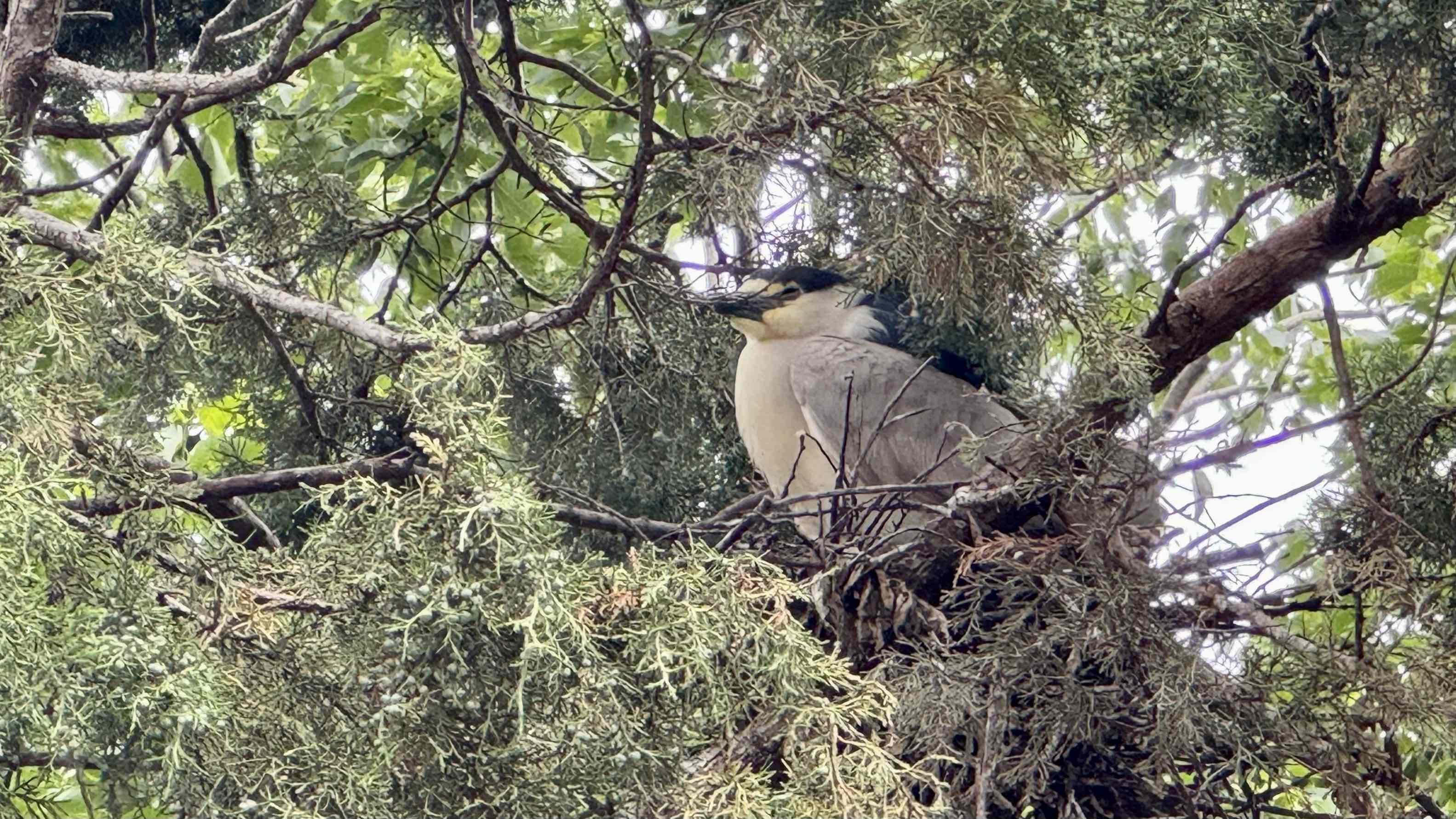 An adult black-crowned night heron on the nest in Lincoln Park Zoo. (Patty Wetli / WTTW News)
An adult black-crowned night heron on the nest in Lincoln Park Zoo. (Patty Wetli / WTTW News)
The night heron colony has been centered in Lincoln Park since about 2007 and specifically in the Children’s Zoo since about 2012.
“What is it about the Children’s Zoo that they find so appealing?” is the question on the mind of Henry Adams, wildlife management coordinator for Lincoln Park Zoo’s Urban Wildlife Institute.
For one, the area is relatively densely forested, with a tight cluster of the types of trees the herons like to use for nesting — honey locust, hackberry and maple. It’s also close to the lake and some of the birds’ favorite harbors for fishing.
But the biggest influence on the herons might be the presence of another animal in the Children’s Zoo: red wolves.
“There is a pretty solid precedent for these birds and other similar species to nest in areas where they have some semblance of a ‘bodyguard’ animal to protect them from smaller-bodied predators,” Adams said.
Up in the trees, the night herons are safe from the wolves and the nearby black bears below, but raccoons, possums and snakes pose a threat, given their potential ability to scamper up a trunk and gobble up eggs and chicks.
The wolves, as apex predators, keep those smaller hunters in check. (In something of an ironic twist, red wolves are themselves critically endangered in the wild.)
“A red wolf can’t necessarily climb a tree but might be able to scare off some of those other predators that could,” Adams said.
It’s a phenomenon Adams witnessed while growing up and working in the American Southeast, with wading birds such as ibises nesting near alligators. A night heron colony at the Detroit Zoo similarly has sought out sites close to that zoo’s bears, wolverines and alligators.
“So this combination of ideal forested nesting habitat, as well as this protector species, are some of the reasons that we think (the night herons) really chose to focus their reproductive efforts with us here at the Lincoln Park Zoo,” Adams said.
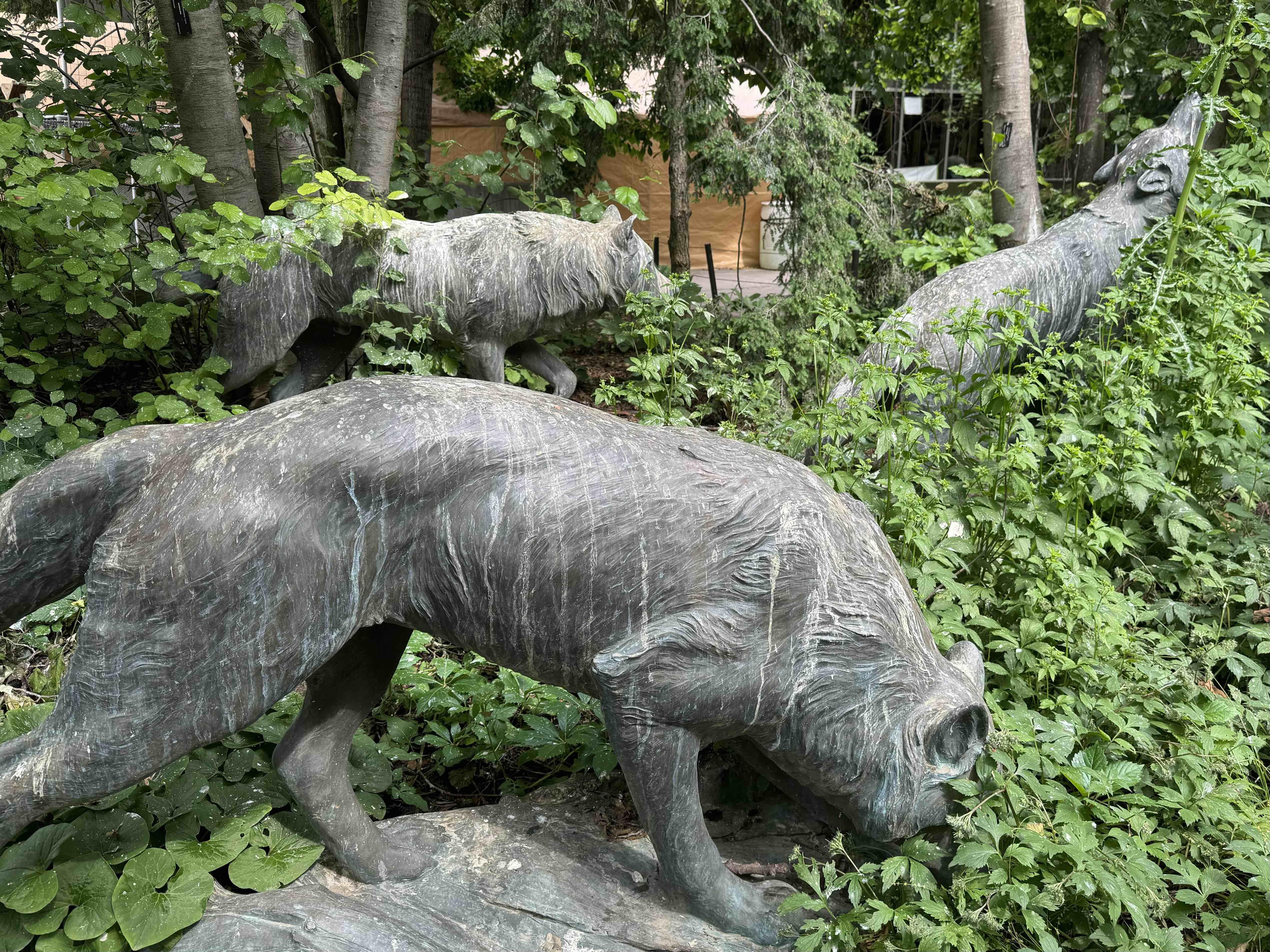 Wolves protect the night herons from smaller potential predators, but they can’t protect their own statues from the herons’ droppings in the Children’s Zoo. (Patty Wetli / WTTW News)
Wolves protect the night herons from smaller potential predators, but they can’t protect their own statues from the herons’ droppings in the Children’s Zoo. (Patty Wetli / WTTW News)
Since joining the zoo’s staff in summer 2021, Adams has nurtured partnerships with the University of Illinois, Illinois Department of Natural Resources, Illinois Audubon, U.S. Fish and Wildlife Service and local night heron advocates such as Amy Lardner. All of them are putting their heads together to best support the birds at the zoo as well as exploring ways to develop other habitat the herons might find equally hospitable.
“The way I like to describe our jobs as ecologists is we’re kind of in a way the social workers of animals,” Adams said. “Unfortunately ... we can’t just have a conversation saying, ‘Hey y’all, what are you looking for in an ideal breeding or overwintering habitat?’ So part of the research is understanding what they’re looking for.”
Adams and a small team of interns and research assistants have, for example, conducted a census of every tree the night herons use for nesting in the zoo. The team not only determined the preferred species but the height — 15 meters up seems to be the sweet spot — and particular features that are attractive to the birds.
“Their nests are not the most structurally sound, so they kind of rely on the trees to provide a lot of the structural integrity for them,” Adams said. “They love these trees with ‘scaffolding,’ just the angle the limbs take to the main trunk of the tree and how they kind of branch out and create little hands almost for the nests to be built in.”
This information can then be used to create human-made nesting structures that mimic the scaffolding effect, versus say the type of platform nests built for osprey.
“Maybe we can build nesting structures that look like a maple, that look like a honey locust or a hackberry,” Adams said. “Maybe there’s a way we can almost build a chain of nesting structures to better connect them (the night herons) to these other potential nesting habitats.”
It’s one thing to understand what herons want and to attempt to replicate that, and another for the herons to take advantage of whatever resources are provided for them.
“They’re autonomous creatures, just like we are,” Adams noted. “They’re going to make their decisions whether we want them to or not.”
Some rookeries are long-lived, with birds using them for 20, 30 or 40 years. For the night herons to vacate the zoo, it has to be worth their while.
“They have to kind of hedge their bets in terms of ‘How much energy are we really going to invest in building a new colony when we have a great one here?’” Adams said.
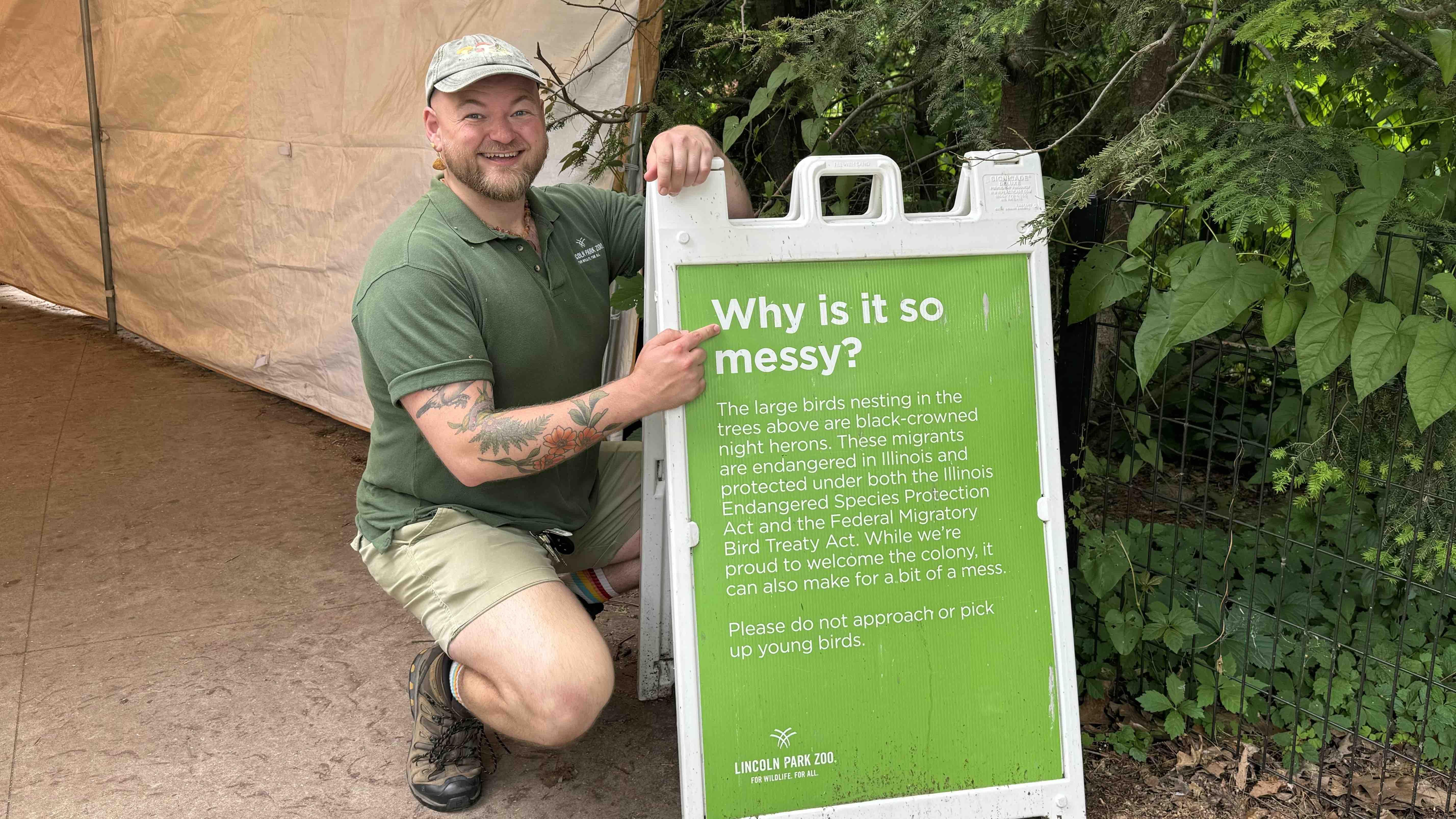 Having the night heron colony at the zoo gives ecologist Henry Adams plenty of opportunities for research and to share conservation information with visitors. (Patty Wetli / WTTW News)
Having the night heron colony at the zoo gives ecologist Henry Adams plenty of opportunities for research and to share conservation information with visitors. (Patty Wetli / WTTW News)
And the night herons really do have it good at the zoo, where staffers have gone out of their way to accommodate the accidental inhabitants.
The Children’s Zoo’s outdoor exhibits are closed to the public during breeding and fledging season to give the birds their space, with signage explaining not only why the area is off limits but why it’s so “messy” with bird poop. (The area will be given a thorough cleaning before reopening, Adams said.)
A layer of woodchips covers the area’s asphalt pathways to provide baby herons with a crash pad if they fall out of the nest, and Adams has developed a protocol for rescuing any of these injured juveniles if they meet certain criteria.
Otherwise, the zoo tries to stick to a hands-off, let-nature-take-its-course approach, which means allowing incidents of siblicide and patricide.
“These birds face a lot of hurdles just at home, let alone when they leave the nest,” Adams said.
Inexperienced juveniles have also been tempted on occasion to drop down to the water features in the brown bear and wolf exhibits, where they wind up not so much a meal but a “chew toy,” Adams said.
Video: Squabble or fun and games? Night herons give chase on the Chicago River. (Patty Wetli / WTTW News)
From a researcher’s perspective, the zoo is pretty convenient, too, offering a relatively accessible setting for monitoring the herons and observing their behavior as well as collecting loads of data.
A pair of traps has been set up in the rookery, with bowls of smelt used as lures to coax night herons inside. Once caught in the enclosure, the birds are either outfitted with a GPS transmitter or leg band and Adams extracts blood samples and jots down other biological information.
These samples offer signs of pathogens or parasites, and can indicate whether a given bird’s diet is rich in carbohydrates or proteins.
The transmitters, in particular, and the bands to a lesser extent, help track the birds on their migratory routes and movement around Chicago. Using this information in tandem with the blood samples, Adams can look at things like whether birds foraging at Montrose Harbor are in better health than night herons foraging downtown, or how their hangout spots relate to their heavy metal burdens.
“There’s a lot of things we can do to elucidate how their movement is informing their health, or vice versa,” Adams said.
Birds tagged in 2023 have already yielded some interesting migratory results, including the night heron’s tendency to head up to Wisconsin to bulk up on food before heading south for the winter. The goal in 2024 is to outfit 18 adult night herons with transmitters and to band an additional 20 adults and 20 juveniles.
Being able to communicate this conservation story to the zoo’s visitors is perhaps the biggest bonus to night herons’ decision to nest in the heart of Chicago.
“I’ve seen so much more interest in and even knowledge of night herons,” Adams said.
Contact Patty Wetli: @pattywetli | (773) 509-5623 | [email protected]

